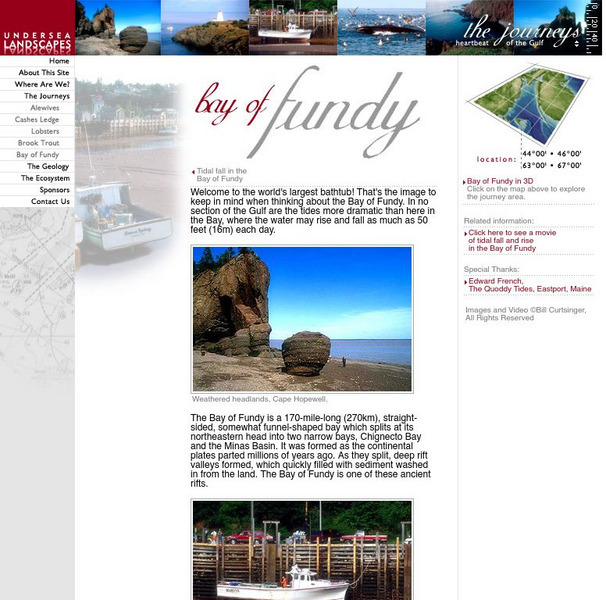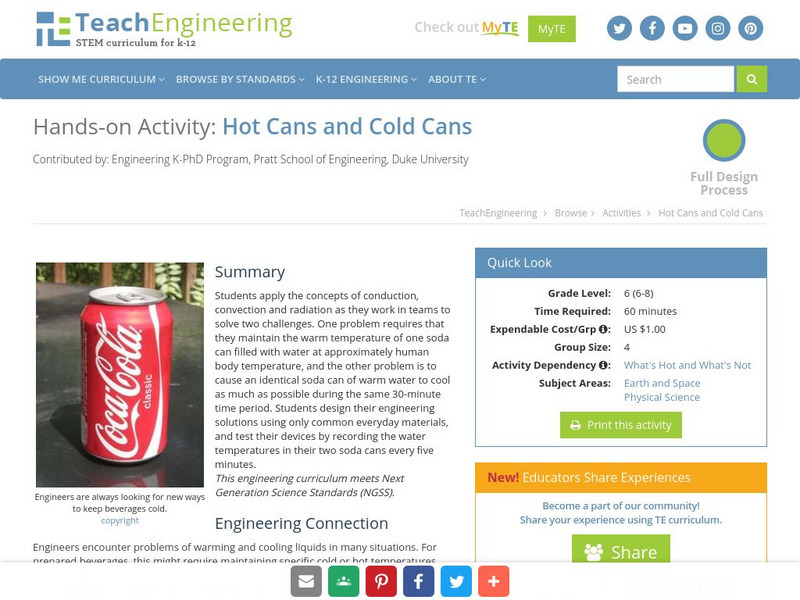PBS
Pbs Learning Media: Mapping Landforms and Water Bodies: Lesson Plan
Learn about different landforms and water bodies and the various characteristics that make them distinct from one another in this lesson plan from WGBH. Navigate around a virtual island to unlock information -- including videos and...
OpenStax
Open Stax: Anatomy & Physiology: Water Balance
Learn how water levels in the body influence the thirst cycle and body fluid regulation. Find out about dehydration and identify common causes of dehydration.
OpenStax
Open Stax: Anatomy & Physiology: Body Fluids and Fluid Compartments
Learn about the chemical and physical characteristics of the fluids that make up the human body.
US Environmental Protection Agency
Epa: Hypoxia 101
Explains what hypoxia is, its causes, the sources, why it is important to reduce it, and where it occurs around the world. Includes a diagram showing how hypoxia develops in a water body and links to lots of additional resources.
Centers for Disease Control and Prevention
Centers for Disease Control: Bam! Body and Mind: Snorkeling
Meet an expert at snorkeling and learn some basics on how to play. Find out what gear you'll need, safety tips, and fun facts.
BioEd Online
Bio Ed Online: Microgravity
In this lesson students will use water balloons to simulate the effects of gravity and microgravity on fluid distribution in the body.
Gulf of Maine Research Institute
Gulf of Maine Research Institute: Undersea Landscapes: Bay of Fundy
Use this site to learn more about bays by discovering the Bay of Fundy. Read about this interesting place and view pictures of this beautiful bay.
Science Struck
Science Struck: Examples of Chemistry in Everyday Life
Gives examples of chemical interactions occurring in the human body, in the world around us, in foods, and in products we use.
Curated OER
Kids Health: Electrolytes
What happens when your blood is tested for electrolytes? Find the answer to this question, and learn how electrolytes, like sodium, potassium, and chloride, function in the body and keep you healthy.
TED Talks
Ted: Ted Ed: What's So Great About the Great Lakes?
The North American Great Lakes- Huron, Ontario, Michigan, Erie, and Superior- are so big that they border 8 states and contain 23 quadrillion liters of water. They span forest, grassland, and wetland habitats, supporting a region that's...
Science Buddies
Science Buddies: Froggy Forecasting: How Frog Health Predicts Pond Health
Have you ever heard the expression "a canary in a coal mine"? In the 1900s and earlier, coal miners brought canaries with them into the mines to act as early warning signals. The canaries were very sensitive to low levels of dangerous...
TeachEngineering
Teach Engineering: What Do Bread and Beer Have in Common?
Students are presented with information that will allow them to recognize that yeasts are unicellular organisms that are useful to humans. In fact, their usefulness is derived from the contrast between the way yeast cells and human cells...
Digital Public Library of America
Dpla: Two Hundred Years on the Erie Canal
Learn about the Erie Canal, one of the most famous man-made bodies of water in the world. Completed in 1825, the Erie Canal connected the port of New York City on the Atlantic Ocean with the Great Lakes transforming trade, industry, and...
Other
Drexel University: Archimedes
An extensive site dedicated to the life and legacy of the Greek mathematician Archimedes. Content includes a timeline of Archimedes' life, an overview of several of his inventions, and numerous anecdotes isolating various moments in his...
Other
Niwa: Estuaries
Want to understand the ecosystem of the estuaries or learn how estuaries are formed? This site contains information about estuaries to help you answer the questions above and more. Learn about the types of estuaries, their ecological and...
TeachEngineering
Teach Engineering: Hot Cans and Cold Cans
Students apply the concepts of conduction, convection, and radiation as they work in teams to solve two problems. One problem requires that they maintain the warm temperature of one soda can filled with water at approximately body...
TED Talks
Ted: Ted Ed: The Most Lightning Struck Place on Earth
Lake Maracaibo is the stormiest place on the planet. Thunderstorms rage above this massive body of water for up to 200 days of the year, with each ear-splitting event lasting for several hours. Graeme Anderson lists the factors that...
American Geosciences Institute
American Geosciences Institute: Earth Science Week: Ring of Fire
Students identify plate boundaries as well as continents, countries, and bodies of water to become familiar with an area known as the "Ring of Fire."
Other
The Incalculable Importance of Plankton
Plankton is a passively swimming plant life in a body of water known as the ocean. The Plankton that live in our ocean have one of the most important roles in the our Carbon Ecosystem. The importance of Plankton in our Ecosystem is...
Science Struck
Science Struck: Uses of Chlorine
Describes the basic properties of chlorine and lists examples of how it is used in water treatment, medicine, industry, and inside the human body.
Science4Fun
Science4 Fun: Lakes
What is a lake? Learn about some famous lakes in the world and how they are formed.
Other popular searches
- Bodies of Water
- Landforms and Bodies of Water
- Major Bodies of Water
- Bodies of Water/rivers
- Bodies of Water Lesson
- Identifying Bodies of Water
- Different Bodies of Water
- Bodies of Water 101
- Bodies of Water Word Scramble
- Landforms and Water Bodies
- Earth's Bodies of Water
- Healthy Bodies Water















